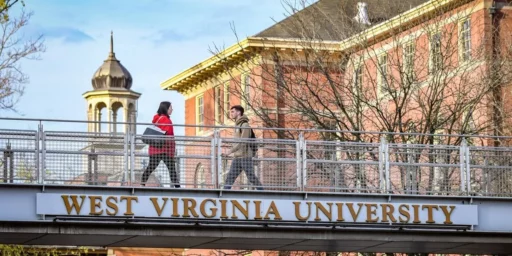More on the Increasing Cost of College Tuitions
Freddie deBoer at Balloon Juice has a nice essay on this subject that looks at two key components of cost inflation in higher ed: rises in administrative costs and physical expansion. He points to the following via links and references in his piece.
In regards to administrative costs, note the following from the executive summary of a Goldwater Institute study (Administrative Bloat at American Universities: The Real Reason for High Costs in Higher Education):
Between 1993 and 2007, the number of full-time administrators per 100 students at America’s leading universities grew by 39 percent, while the number of employees engaged in teaching, research or service only grew by 18 percent. Inflation-adjusted spending on administration per student increased by 61 percent during the same period, while instructional spending per student rose 39 percent. Arizona State University, for example, increased the number of administrators per 100 students by 94 percent during this period while actually reducing the number of employees engaged in instruction, research and service by 2 percent. Nearly half of all full-time employees at Arizona State University are administrators.
Along the same lines, Sherry Linkon writes:
As Benjamin Ginsburg explains in The Fall of the Faculty: The Rise of the Administrative University (Oxford UP, 2011), the ranks of administrators and staff have grown much faster than the faculty – 85% for administrators and 240% for staff, compared with 51% growth in the number of faculty between 1975 and 2005.
In regards to buildings, deBoer makes some salient points:
those are the wages of the neoliberal insistence that only market mechanisms are worthy: when you insist that education should just be another product to be marketed and bought, you get what teenagers think is cool rather than what is best for their education or for society.
In other words: what do we expect 18 year-olds to be attracted to? Libraries and faculty or dining halls, dorms and gyms?
This is not all of the picture, but are factors worth considering when one attempts to evaluate the situation.






I think the cost of college tuition can be summed up in three words (channeling my best inner Jimmy McMillan): “too damn high.”
@Talmadge East:
That depends what kind of education your talking about. Depending on the degree, the cost of an education will be more than recouped over the course of one’s earning life. Especially if we’re talking about engineers, the sciences, and professional degrees like medicine and law.
Can you say the same thing about that Communications degree that many of my friends graduated with in 1990? I’m not so sure.
I think this misses the selection effect. Remember, none of these schools fail to meet capacity. They all select from a much wider pool.
So, when you raise spending on dining halls, dorms and gyms you select for students willing to pay for those things, not necessarily people who value them, and certainly not for those turned off by the costs.
A school may spend more, see application rate decline, but not care if the class is filled (esp. if it is filled by an increasing percentage of high-paying out of area students).
I don’t think that you can blame the emphasis on dorms, dining halls, and gyms on “neoliberals”. To explain why I have to provide a little background.
Back when I was an undergraduate I served on a number of building committees at my elite university. That was almost 50 years ago. Lyndon Johnson was president. The Great Society was the political program of the day. This preceded the “neoliberal” revival by a decade or more. The committee members overwhelmingly had the same priorities as are being attributed to their successors today.
Marketing universities to prospective students hardly crossed anybody’s mind. The emphasis was on marketing the university to donors. I strongly suspect it still is.
@Dave Schuler:
I believe that he was simply referring to appealing to market forces.
Donors are big, yes. However: as someone in the middle of all this, I have no doubt that administration is very much focused on recruiting students. Donors like the sports arenas, but students like food courts and nice dorms.
@Steven L. Taylor:
The fundamental lesson in Christensen is that you only see the customers who have accepted the deal. It isn’t “students” who like food courts and nice dorms. It is “applied” and “accepted” students. They are a subset.
As I say above these can fall as a percentage of the potential market (HS graduates) and not impact the college. The college need only meet enrollment, and if they can do that while attracting bigger spenders (borrowers or not), they prosper.
Basically, the students down at the local community college were part of the same starting market. I don’t think you can fault them for the four year college’s high spending.
It’s simple economics. If the market clearing price for an education at Hypothetical U is $10k/year, providing $5k in student tuition subsidies makes the market clearing price $15k.
Ah, bureaucratic displacement, Gammon’s law
The risk is, the government will become enamored with a controlling the universities and work to prevent innovation there as they have in elementary and secondary education.
@john personna:
So, when you raise spending on dining halls, dorms and gyms you select for students willing to pay for those things, not necessarily people who value them, and certainly not for those turned off by the costs.
This. This! THIS! Personna says *almost exactly* what I was going to. You don’t just want more students. You want more students that fit a particular profile. You want the best profile of student you can get. Either to avoid watering down the student body if you are increasing enrollment, or to get more of the “desirable” students if you are not increasing enrollment.
The University of Colorado wants to become Colorado State. Colorado State wants to become the University of Colorado. The University of Colorado wants to become Michigan. The best way to do this is to raise the profile of incoming freshman (or have a good football program). That’s never going to happen on a budget.
(It’s actually not unlike football programs themselves. You can’t pay the athletes – not above-table – so you bribe them with the stuff you can give them in terms of facilities. Same goes for the smarter and wealthier kids.)
@Trumwill:
I’m pleased that we agree, though I think it might be a bit worse. There are many things that shape the application pool, and it would be tragic if colleges built “dining halls, dorms and gyms” thinking those were what improved applications, when they did not.
If everyone is in a “dining halls, dorms and gyms” arms race, it might be kind of hard to tell who is winning on that front, and who is winning on geography or change in the economic landscape.
And certainly if many colleges are in that arms race, options (other than community college) for students to “choose differently” are rare.
I am sure the right has some wonderful innovation that is shovel ready. Things like making sure elementary and secondary education is only available to those who are able to pull out their checkbook and pay a private institution for it.
@john personna:
If everyone is in a “dining halls, dorms and gyms” arms race, it might be kind of hard to tell who is winning on that front, and who is winning on geography or change in the economic landscape.
The “arms race” is not just in campus living amenities. Research universities need to compete for top faculty talent, which in turn brings students (mostly grad students) and reputation (more research funding).
There is a big push for university campuses to be more “green,” and many schools are implementing a number of initiatives on that front, from better recycling and waste disposal to smart grid to installation of renewable energy sources like wind and solar. All of this costs money up front, even if it will save money in the long run.
Technology upgrades are seen as necessary as well. Back in the day a school could get by with computer labs that seldom replace equipment, spotty wifi networks with no security, etc. Now students expect newer equipment and total wifi coverage, and use bandwidth at an enormous and increasing rate. In addition, many schools provide their students with laptops or tablets.
Athletic teams at colleges have increased dramatically in number over the past 2-3 decades (e.g. the number of women’s soccer teams has increased tenfold since 1980), and with the exception of a very small fraction of teams, they all lose money.
In addition, there are higher expectations for campus security, support services for students such as disability resources, mental health counseling, and commuter assistance.
Add to all of that the fact that for many schools local property and other taxes have increased, especially during the recession when demand for higher education has increased, creating even greater competition for students.
This is the competitive landscape that exists in higher education in the United States right now. I wonder if any colleges have bucked the trend and eschewed spending on amenities and prestige, instead focusing all their spending on expanding the faculty ranks and increasing faculty salaries, and how that is working out for them, enrollment and ranking wise.
@mantis: Aren’t a lot of universities legally exempt from paying real estate taxes? I know that MIT is, and then there’s this silly little “after YOU, Gaston!” “no, after YOU, Alfonse” rite we do every year where MIT graciously donates to the city of Cambridge the same amount of money it would otherwise pay in taxes, and the city of Cambridge always acts pleasantly surprised. It’s very New England-ish.